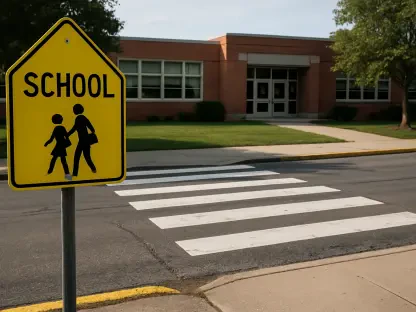In a small community like Ely, Minnesota, where the local school district serves as a cornerstone of daily life, the looming uncertainty surrounding the 2026 property tax levy has sparked significant concern among residents and officials alike. With property taxes already on the rise across St. Louis County and within the city itself, the Ely School District faces a complex financial landscape shaped by state formulas, declining enrollment, and the outcomes of recent voter-approved initiatives. The school board’s recent decision to set a preliminary levy at the maximum allowed by law reflects a cautious strategy to secure potential state funding, yet the final amount remains unclear, pending state calculations expected later this fall. This situation not only highlights the intricacies of Minnesota’s education funding system but also raises pressing questions about how local property owners will bear the burden of potential tax hikes. As the district navigates these challenges, the balance between maintaining educational quality and managing taxpayer impact remains a critical focus.
Navigating State Formulas and Financial Uncertainty
The process of determining the Ely School District’s levy for 2026 is far from straightforward, as it hinges on a state-driven formula rather than local budget decisions. Unlike municipal levies that reflect direct budgetary needs, school levies in Minnesota are calculated based on factors such as student enrollment and property wealth within the district. Recently, the school board approved a preliminary levy at the maximum level permitted by state law—a standard practice to ensure no potential revenue is lost. However, the exact amount to be collected won’t be finalized until state figures are released later this fall, with formal approval slated for December. This uncertainty is emblematic of a broader challenge in Minnesota’s education system, where districts often have limited control over their financial outcomes. For Ely residents, this means preparing for possible tax increases without a clear picture of the final impact, creating a sense of unease as the deadline approaches.
Adding to the complexity is the district’s reliance on state funding, which accounts for nearly 68 percent of its total revenue, while property taxes make up roughly a quarter. This heavy dependence on state aid underscores why the formula-driven levy process is so pivotal—local adjustments are constrained by external calculations. The historical trend of levy amounts in Ely further illustrates the unpredictability, with figures fluctuating significantly in recent years due to various factors, including voter decisions and capital projects. For instance, the levy saw a notable jump of over 12 percent in the current year, driven entirely by a voter-approved capital project initiative. Without such community-backed measures, taxes might have actually decreased, revealing how intertwined local support and state oversight are in shaping financial outcomes. As the district awaits clarity on the 2026 levy, the interplay of these elements continues to keep stakeholders on edge, unsure of what the final tax burden will entail.
Impact of Declining Enrollment and Voter Decisions
One of the most significant factors influencing the potential 2026 levy for Ely School District is the steady decline in student enrollment, which has fallen by nearly 20 percent over recent years. A smaller student population directly affects portions of the levy tied to per-pupil funding, which could result in a lower overall tax collection for the area. This demographic shift offers a potential silver lining for property owners, as it might mitigate some of the anticipated tax increases. However, not all levy components apply uniformly—some affect all properties in the district, while others exclude seasonal-recreational properties, creating a varied impact across different types of taxpayers. This nuanced structure means that while enrollment declines could ease the burden for some, the overall effect on individual tax bills remains difficult to predict without finalized state data, leaving residents to speculate on how these changes will play out in their specific circumstances.
Equally critical to the levy outlook are the outcomes of recent voter-approved funding measures, which have played a substantial role in driving tax increases. A notable example is the capital project levy passed in November 2024, allocating $350,000 for technology, transportation, and curriculum needs, applied across all properties in the district. Additionally, a 2020 referendum that approved a $10 million bond for a major infrastructure overhaul—part of a broader improvement project exceeding $20 million—has contributed to levy hikes through ongoing debt service payments. These decisions reflect a community consensus to invest in educational facilities and resources, even at the cost of higher taxes. Yet, the burden of these increases is felt differently among property owners, particularly those on fixed incomes or with seasonal properties, highlighting a tension between supporting schools and managing personal finances as the 2026 levy looms on the horizon.
Community Support and External Funding Dynamics
Beyond local taxes and state formulas, the Ely School District benefits from substantial external support that shapes its financial landscape. Contributions from entities like the Iron Range Resources and Rehabilitation Board have been instrumental, with over $10 million allocated for renovations, athletic facilities, and direct funding tied to taconite production taxes. This partnership exemplifies a collaborative approach to addressing infrastructure needs that might otherwise strain local levies. The district’s formal acknowledgment of this support through a letter of thanks signals a recognition of how vital such external resources are in sustaining operations. For residents, this assistance could temper the impact of potential tax hikes for 2026, as it reduces the need to rely solely on property taxes for major projects. However, the dependency on such funding also raises questions about long-term sustainability if external contributions were to diminish.
In addition to state and regional support, community engagement through donations and operational updates further bolsters the district’s efforts. Recent contributions for educational programs and auditorium enhancements, alongside progress on athletic facility upgrades with bids expected early next year, demonstrate a collective commitment to improving the school environment. Staff changes, policy adoptions, and initiatives like the school musical reflect a district managing diverse priorities amid financial uncertainty. While these elements are secondary to the levy discussion, they paint a fuller picture of a community actively investing in its schools, even as tax concerns linger. The balance between local support and the potential for increased property taxes in 2026 underscores a pragmatic approach—maximizing available resources while navigating the constraints of state-driven funding, with an eye toward maintaining educational standards for future generations.
Looking Ahead to Financial Strategies
Reflecting on the path traveled, the Ely School District has tackled a multifaceted financial puzzle, balancing state mandates with local needs while addressing significant infrastructure demands. The preliminary levy for 2026, set at the maximum to safeguard potential revenue, awaits final state confirmation, a process that keeps the community in suspense. Historical voter approvals, from capital projects to major bonds, have driven tax increases, though declining enrollment offers a counterbalance that might soften the blow for some.
Moving forward, strategic planning will be essential to mitigate future tax hikes while sustaining educational quality. Exploring additional external funding opportunities, similar to past collaborations with state agencies, could alleviate local burdens. Engaging the community in transparent discussions about levy impacts and project priorities might also foster greater understanding and support. As state calculations finalize, the district must prepare flexible budgets to adapt to various outcomes, ensuring that both fiscal responsibility and student needs remain at the forefront of decision-making.









